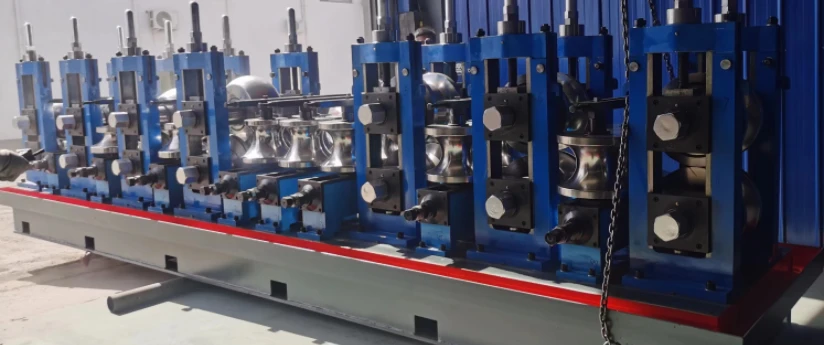copper wire straightener
The Importance of Copper Wire Straighteners in Modern Industry
Copper wire is a fundamental component in a myriad of applications ranging from electrical wiring to telecommunications. Its excellent conductivity, malleability, and resistance to corrosion make it an ideal choice for a variety of uses. However, one of the challenges faced in the manufacturing and processing of copper wire is ensuring that it is straightened effectively for further use. This is where copper wire straighteners come into play.
Copper wire straighteners are specialized machines designed to remove the curvature and irregularities from copper wire, providing a straight and uniform product. These devices are essential in industries that require precise and consistent wire for electrical components, automotive applications, and even architectural designs. The process of straightening wire not only improves its usability but also enhances product quality and aesthetic appeal.
The Mechanism of Copper Wire Straighteners
Copper wire straighteners operate on a simple yet effective mechanism. The wire is fed through a series of rollers that exert pressure and guide the wire into a straight path. This method reduces the bending and twisting that naturally occur during the wire’s manufacturing process. Most straighteners are adjustable, allowing for various wire diameters and shapes, which is crucial considering the diverse needs in different industries.
As the wire passes through the rollers, the straightening process can also involve additional treatments, such as annealing, which softens the metal and makes it easier to manipulate. The combination of straightening and annealing results in a wire that not only appears straighter but also has improved mechanical properties, leading to a reduction in breakage during further processing.
Benefits of Using Copper Wire Straighteners
1. Improved Precision In many applications, especially in electrical wiring, precision is paramount. Straightened wire ensures better-fitting connections and reduced chances of short-circuiting.
copper wire straightener

2. Enhanced Productivity Straightening wire can significantly speed up downstream processes. When the wire is straight, it can be fed into machines without the need for extensive manual adjustments, reducing labor costs and enhancing overall productivity.
3. Better Quality Control A straightened wire minimizes defects and inconsistencies, leading to a higher quality finished product. This is particularly important in sectors where reliability and performance are critical, such as aerospace, automotive, and electronics.
4. Cost Efficiency By improving the overall quality and usability of the wire, manufacturers can reduce waste and rework, ultimately leading to cost savings. High-quality straightened wire also translates to lower failure rates in the field.
Applications of Straightened Copper Wire
Straightened copper wire finds application in various industries. In the electrical industry, it is widely used for making connections, wires for circuit boards, and components in electric motors. In the automotive industry, straightened wire plays a key role in wiring harnesses, sensors, and various electrical assemblies.
Furthermore, straightened copper wire is also employed in the telecommunications sector for the manufacturing of coaxial cables and other communication lines. Additionally, the construction industry utilizes straightened copper wire in reinforcing elements and architectural features.
Conclusion
In summary, copper wire straighteners are indispensable tools in the processing and manufacturing of copper wire. Their ability to provide straight, uniform wire is essential for enhancing quality, increasing productivity, and ensuring precision in various applications. As industries continue to evolve and demand higher standards, the role of copper wire straighteners will only grow more significant. Investing in advanced straightening technology not only benefits manufacturers but also contributes to the overarching goal of reliability and excellence in copper wire applications. Whether in electrical systems, automotive components, or telecommunications, the importance of a well-straightened copper wire cannot be underestimated.
-
High Frequency Straight Seam Welded Pipe Production Line-BzZhou Xinghua Machinery Equipment Manufacturing Co., LTD.|Precision Welding, High EfficiencyNewsJul.30,2025
-
High Frequency Straight Seam Welded Pipe Production Line|BzZhou Xinghua|Precision Welding&EfficiencyNewsJul.30,2025
-
High Frequency Straight Seam Welded Pipe Production Line - BzZhou Xinghua|Precision Engineering&EfficiencyNewsJul.30,2025
-
High-Frequency Straight Seam Welded Pipe Production Line-BzZhou Xinghua Machinery Equipment Manufacturing Co., LTD.NewsJul.30,2025
-
High-Frequency Straight Seam Welded Pipe Production Line-BzZhou Xinghua Machinery Equipment Manufacturing Co., LTD.|Precision Manufacturing, High EfficiencyNewsJul.30,2025
-
High Frequency Straight Seam Welded Pipe Production Line-BzZhou Xinghua Machinery Equipment Manufacturing Co., LTD.|Precision Steel Pipe Manufacturing&Industrial EfficiencyNewsJul.29,2025


